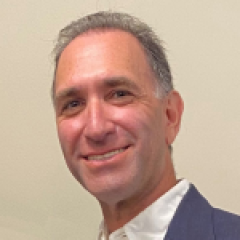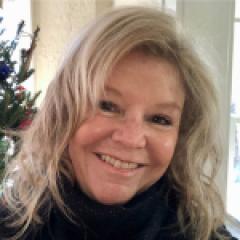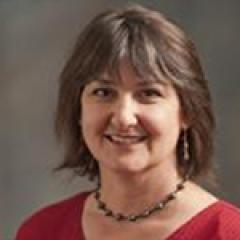At Hammond High School in Columbia, Md., the faculty and staff wanted to buck a national trend in which students of color and those living in poverty enroll in advanced classes far less frequently compared with other students. This post explains how they did it, and why Hammond is a winner in the 2017 “Schools of Opportunity” project, which recognizes public high schools that work to close opportunity gaps by creating learning environments that reach every student.
[Here are eight ‘Schools of Opportunity’ that do extraordinary things for students]
The Schools of Opportunity project started in 2014 as a pilot in New York and Colorado and went national in 2015-2016. Several dozen schools have been honored in the program, which assesses a range of factors, including how well the adults in a school building provide health and psychological support for students, as well as judicious and fair discipline policies and a broad and enriched curriculum. The effort to highlight successful public schools in traditional districts may have more resonance than ever in the era of President Trump, whose education secretary, Betsy DeVos, has made it her top priority to expand alternatives to them.
The 2017 Schools of Opportunity project honors six “gold” and two “silver” schools. The recipients of the gold honors are the Chicago High School for Agricultural Sciences, Lincoln High School in Nebraska, Denver South High School in Colorado, Broome Street Academy Charter High School in New York City, Health Sciences High and Middle College in San Diego, and Seaside High School in California. The two silver Schools of Opportunity for 2017 are William C. Hinkley High School in Aurora, Colo., and Hammond High.
The authors of the following piece on Hammond are Kevin Welner, one of the founders of the Schools of Opportunity project, the director of the National Education Policy Center at the University of Colorado at Boulder and a professor specializing in educational policy and law; Linda Molner Kelley, former assistant dean of teacher education and partnerships and director for outreach and engagement at the University of Colorado at Boulder, and Kellie Rolstad, associate professor in the Department of Teaching, Learning, Policy and Leadership at the University of Maryland’s College of Education.
[At this school, being ‘different’ is an asset]
[Down on the farm, these Chicago high school students get a unique public education]
By Kevin Welner, Linda Molner Kelley and Kellie Rolstad
Hammond High School
Columbia, Maryland
Principal: John DiPaula
Howard County Superintendent: Michael J. Martirano
Enrollment: 1,275
Economically disadvantaged: 34 percent
Comprehensive high schools in the United States often resort to counterproductive strategies of sorting and stratification, with groups of students subjected to what former president George W. Bush called the “soft bigotry of low expectations.” But strong supports for students and their teachers can lead to raised expectations, greater challenges and very real successes. That’s the path taken by Maryland’s Hammond High School, where faculty and staff, parents and community come together to enrich students’ lives and learning.
As its community demographics have changed over the past years, so has Hammond’s deep commitment to equity and to building deep personal connections. The school strives to provide engaging academic opportunities for all members of its now-diverse student body.
Upon realizing that their own students had been following national trends of low enrollment in advanced classes by students of color and students living in poverty, Hammond’s staff developed an initial strategy: Encourage students to take at least one course at one higher level each school year.
Recognizing that students entering advanced courses were struggling, they also designed a series of supports to ensure student success. These included a summer Step It Up Workshop for students enrolling in Honors, Gifted and Talented (GT), or Advanced Placement (AP) classes; Alpha Achievers to support African American males; an English for Speakers of Other Languages (ESOL) Homework Club; and elimination of prerequisites for advanced courses.
Finding that some students were nonetheless unprepared for advanced courses, the school implemented measures to create equitable access to rigorous curriculums. Hammond eliminated all low-track classes and then, to eradicate de facto ability grouping, carefully enrolled English Language Learners (ELLs) and students with special needs across the school’s classrooms. Teachers certified to work with these ELL and special-needs students co-teach with content-area teachers in these rigorous classes.
To support instruction, the school created common planning and professional development for teachers to collaborate in their disciplines to create rigorous lessons that could engage and support all learners in their classes. All Hammond teachers participate in cultural proficiency initiatives as a way to build capacity as they identify and close opportunity gaps and address unintentional bias.
This culture of staff collaboration has become an essential part of the school’s shared leadership model, with teachers empowered to make curricular decisions, determine their own professional development needs, and work as equal partners in serving students.

Students Naahdia Mundi, left, and Jesuseyi Oyeyemi look through microscopes at Hammond High School in Columbia, Md. (Hammond High School)
Jesuseyi Oyeyemi, a 10th-grade Nigerian immigrant enrolled in advanced classes, described his appreciation for the ways that teachers support his learning at Hammond.
“In GT classes, teachers break it down as simple as possible and put the time into explaining it to us,” he said. “After school, teachers are available for additional help and make themselves available around the students’ schedule. … My relationship with teachers has helped me to gain confidence to approach my teachers to explain things more. In classes at Hammond, the teachers are more approachable and easier to talk to.”
Naahdia Mundi, an African American 10th-grader enrolled in AP classes, also has benefited from strong relationships with — and support from — her teachers.
“I have gotten close with some of my teachers like Ms. Kuhl [Brooke Kuhl-McClelland] and Ms. [Raymona] Reid, but it isn’t just one teacher but an overall feeling of support for us to strive and do better. … In preparation [for] the Government AP exam, Ms. [Hannah] Phillips stays after school every day and helps us to practice and get ready. Every day after school, before track practice, I go to see one of my teachers and we just talk about the day and unwind.”
High expectations from her teachers are helping her to reach her goals; she wants to attend Stanford University to study biology, followed by medical school at Johns Hopkins, a world-class university just 20 miles from Hammond but unreachable for so many students denied rich opportunities to learn earlier in life. “Hammond is pushing me to go beyond my comfort level,” Naahdia said.
Additional resources and programs help to keep students in their advanced classes. The math department offers a summer geometry class as a bridge to advanced math, and the school sponsors an African American AP Focus Group. Extended-day programs, with transportation included, provide Hispanic Heritage Club, Algebra Boot Camp, mentoring, homework assistance and college awareness programs in partnership with community nonprofits. Full-time liaisons for black and Hispanic students and a part-time liaison for international students provide resources to engage students and their families.
Jesuseyi took advantage of these special resource programs. “The summer Step It Up to Honors, GT, and AP Boot Camp program increased my range of thinking to solve problems and to determine what the questions are asking and what resources are needed to answer them,” he said.
Hammond’s efforts are paying off. Enrollment in advanced classes has dramatically improved for all demographic groups. During the reform window from 2010-2016, the graduation rate for African American students increased from 80 percent to 92 percent, for Hispanic students from 81 percent to 95 percent, and for students with special needs from 56 to 80 percent.
A healthy, welcoming culture at the school creates trust and values differences, as shown in this video that the school made upon receiving “School of Opportunity” recognition.
The collaborative culture fuels innovative classroom lessons, and our Schools of Opportunity visitation team witnessed groups of students engaged in interesting project-based activities. Student guides showed the team science classes where students were excitedly creating videos of scientists and a math class where students buzzed around the room working on a group quiz. The students (one of whom exclaimed that she once hated math but now realizes it is fun) told them about how one math teacher periodically hosts a “Problem Set Party,” where students spend the day working out answers to problems and eating good food.
During the site visit, we learned about an annual three-day field trip called Cultural Proficiency, which invites students to explore the impact of culture on their lives. Students share knowledge of their own cultures and learn about others. Two students, one Latina and one African American, shyly but proudly described to our site visitors how that program had given them more confidence in their own heritages and helped them be more open to others.
Learning activities are engaging and participatory. “In every classroom we passed or visited, we saw students working on interactive projects and heard a low-level hum of activity and discussion,” said one visitor. “… [S]tudents were moving about, pointing at their laptops and talking about their projects.”
Naahdia and Jesuseyi said they both benefit from the collaborative learning approaches that are so common in Hammond’s classrooms. Naahdia noted, “In a group you know that others are relying on you, so I do better because I am working not just for myself, but for the group. We are relying on each other for success.”
Jesuseyi, who hopes to study engineering at Massachusetts Institute of Technology or Harvard University, notes the advantages of group project work and valuable opportunities to use technology with engineering and programming. “Currently, in my Intro to Engineering and Design class, I am learning programming and working with others in groups,” he said. “One project I am working on now is a detection program for a ball crossing a line and it applies to games like soccer.”
The Schools of Opportunity visitation team concluded:
“This school talks about equity and opportunity, and all evidence we saw shows that it isn’t just talk; the school is very actively working to increase opportunities for every student. More than anything, this school has created a very strong community that shares a deep culture of joy in learning, a community that revolves around respect and care for students, not just for their future, but for them, right now. At Hammond, people are important.”
It’s a perfect slogan for this special school that has rightfully earned its designation as a School of Opportunity.




